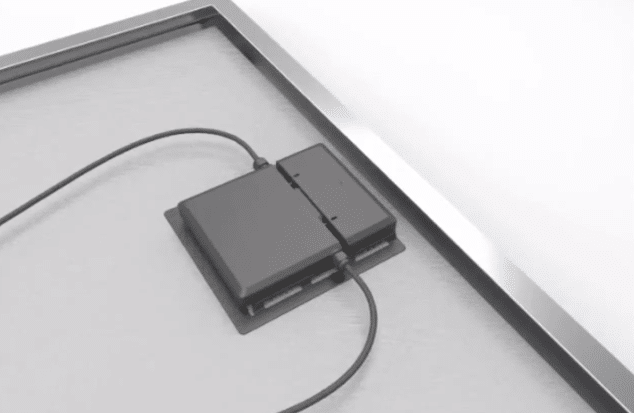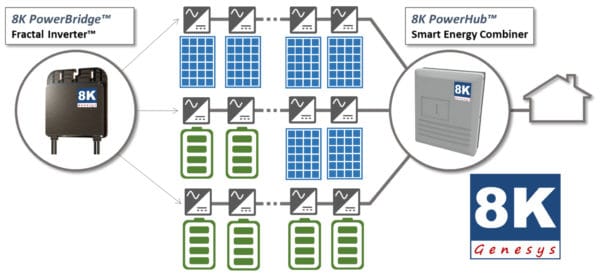In today’s rapidly converging residential solar+storage sector, it often seems complicated to figure out the best module-level power electronics solution (MLPE) is to make installation easier and more effective. Yesterday, Empower Micro Systems released its next-generation Genesys 8K system that it believes will make the question largely moot.
According April 2017 “Solar Snapshot” report by ROTH Capital Partners, the barriers to entry for the solar installation market are lower than ever, allowing businesses in similar industries – roofers, home security, electricians, and HVAC service providers – to join the ever-growing solar revolution.
The company’s modular smart home energy platform was designed specifically for such installers in the residential solar, energy storage and unified solar+energy storage markets. What sets it apart, however, is the simplicity of its design. Unlike other MLPEs on the market, Genesys 8K only requires two components: the 8K PowerBridge, a module-level fractal inverter; and the 8K PowerHub, a smart-energy combiner.
“The next era of smart home energy convergence is here, and it’s ready for primetime,” said Mika Nuotio, CEO of Empower. “We’re excited to enable our customers to deliver a better solar + storage experience to homeowners. Working with major global manufacturing customers, we are accelerating smart energy deployment and truly democratizing energy.”
Empower is this patented technology and turn key product designs to inverter, photovoltaic module, and lithium-ion battery module manufacturers around the world looking to gain traction in the rapidly converging residential smart energy sector.
This content is protected by copyright and may not be reused. If you want to cooperate with us and would like to reuse some of our content, please contact: editors@pv-magazine.com.









By submitting this form you agree to pv magazine using your data for the purposes of publishing your comment.
Your personal data will only be disclosed or otherwise transmitted to third parties for the purposes of spam filtering or if this is necessary for technical maintenance of the website. Any other transfer to third parties will not take place unless this is justified on the basis of applicable data protection regulations or if pv magazine is legally obliged to do so.
You may revoke this consent at any time with effect for the future, in which case your personal data will be deleted immediately. Otherwise, your data will be deleted if pv magazine has processed your request or the purpose of data storage is fulfilled.
Further information on data privacy can be found in our Data Protection Policy.